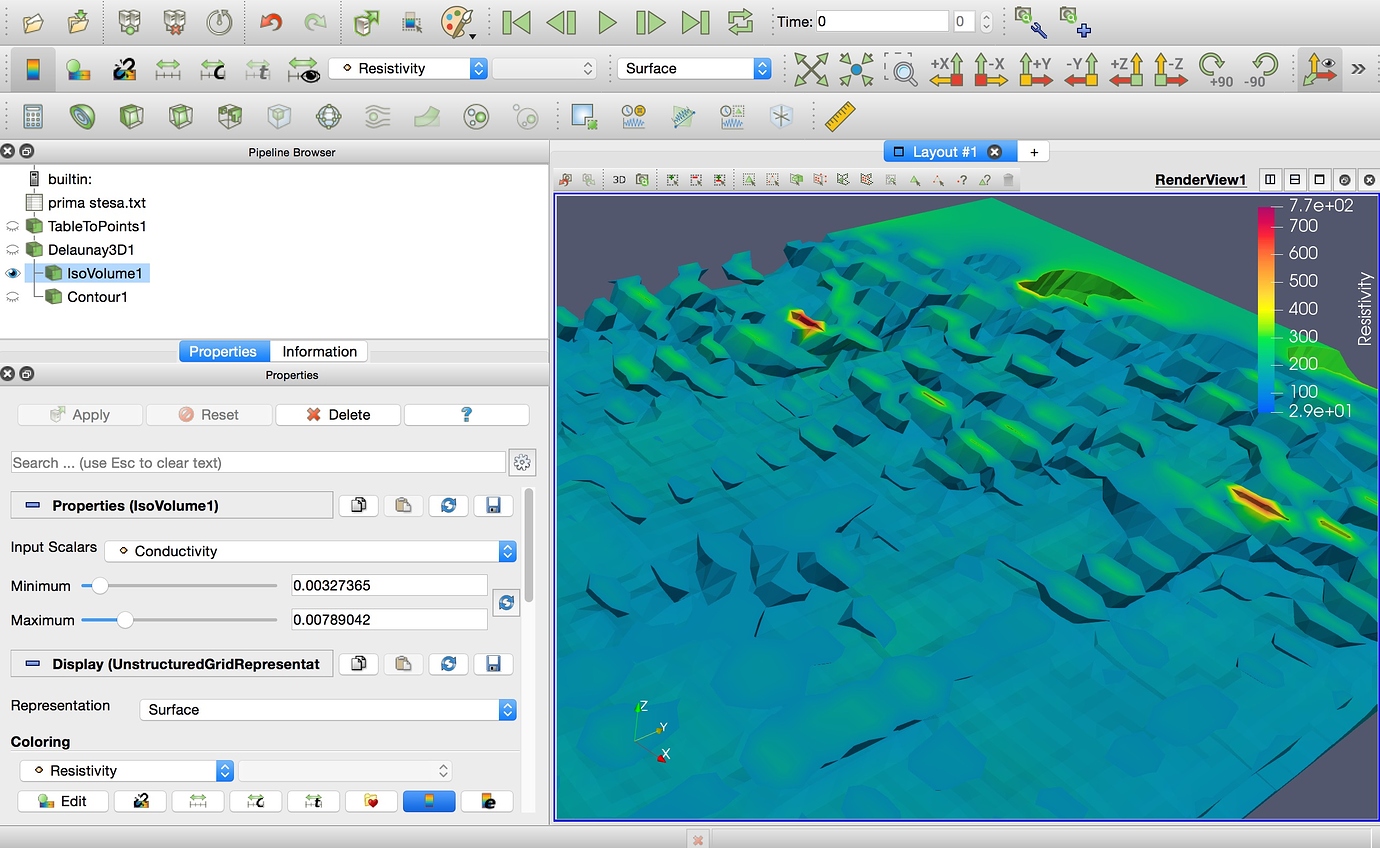

GetCurrentDataObject () # get the array container atts = blk. IsDoneWithTraversal (): # get the local data block and its props blk = it. GetDataTime () # integrate over the local blocks varint = 0. AddGhostCellsArray ( dobj, 'mesh' ) time = adaptor. AddArray ( dobj, 'mesh', vtkDataObject. close () return def Execute ( adaptor ): # get the mesh and arrays we need dobj = adaptor. csv' % ( array ) f = open ( fn, 'w' ) f. Get_rank () = 0 : fn = out_file if out_file else 'integrate_ %s. Import numpy as np, matplotlib.pyplot as plt from _support import * from vtk import vtkDataObject import sys # default values of control parameters array = '' out_file = '' def Initialize (): # rank zero writes the result if comm.
#PARAVIEW HEIGHT ISOVOLUME CODE#
On the left side of the figure AMReX produces data, theīridge code pushes the data through the configurable analysis adaptor to the The back end via XML means one user can access Catalyst, another Libsim, yetĪnother Python with no changes to the code. Select and configure one or more back ends at run time. SENSEI provides a configurable analysis adaptor which uses an XML file to AMReX contains SENSEI data adaptorsĪnd bridge code making it easy to use in AMReX based simulation codes. Of popular analysis and visualization libraries such as VisIt Libsim, ParaViewĬatalyst, Python, and ADIOS to name a few. SENSEI comes equipped with a number of analysis adaptors enabling use Which the simulation manages adaptors and periodically pushes data through the Present the back end data consumers to the simulation, and bridge code from Present simulation data in SENSEI’s data model, analysis adaptors which The three major architectural components in SENSEI are data adaptors which 1 SENSEI’s in situ architecture enables use of a diverse of back ends whichĬan be selected at run time via an XML configuration file (I also have aversion of paraview 4.1 modified to work with OpenFOAM, and installed in a Ubuntu64x-12.Fig. * To calculate a distribution of velocity magnitudes (where the X axis is velocity magnitude ranges /bins, and Y axis is total volume occupied by the cells in each velocity magnitude range - not cell count as is the case of histograms) Trying to calculate the volume inside each contour surface Here is where I am stuck (and what I intend): Applied the "Contour" filter, and generated 11 volumetric contours (from 0.0 to 0.3 m/s) (I used point data for the calculator because I can only apply contour to point data)ģ. Applied the "Calculator" filter to calculate Result Array = Umagnitude from the point data with the formula (U_X^2+U_Y^2+U_Z^2)^.5 An 3D unstructured grid resulting from a CFD code (OpenFOAM) with velocities (Ux, Uy, Uz)Ģ. I would like to calculate the volume contained by each contour surface applied to an unstructured dataset. Subject: Contour volume quantification (volume fractions of a scalar in an unstructured grid) Can anyone confirm my findings about negative volumes?įrom: ParaView on behalf of Jose Rey Anything else with arbitrary cuts (as per my python scripts) show volumes which do not add up to the global volume, because of the negative volumes cells.
#PARAVIEW HEIGHT ISOVOLUME FULL#
Using well-behaved cuts (such as orthonormal cuts), and flipping the clipper's normal by toggling "inside out", I do get global volumes that add up to the full volume = 20^3 = 8000. We can also do a global summation like sum(volume(inputs)) (right image in my script) The python calculator can let you type in an expression like volume(inputs), which would compute a cell-by-cell volume (left image in the attached script) By that I mean that some cells are returned with negative volumes, and that throws off the global computation totally. However, I find that the clipper, or isovolume filter do not seem to always create consistently oriented cells. I would do it iteratively, using an Isovolume between two different values Given the new features of the python calculator, it ought not to be difficult to compute volumes. Next message: sources: why redundant number of points needed?.Previous message: Contour volume quantification (volume fractions of a scalar in an unstructured grid).Contour volume quantification (volume fractions of a scalar in an unstructured grid) Favre Jean jfavre at cscs.ch Contour volume quantification (volume fractions of a scalar in an unstructured grid)


 0 kommentar(er)
0 kommentar(er)
